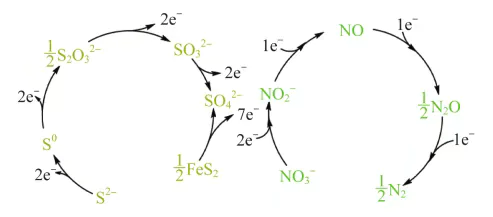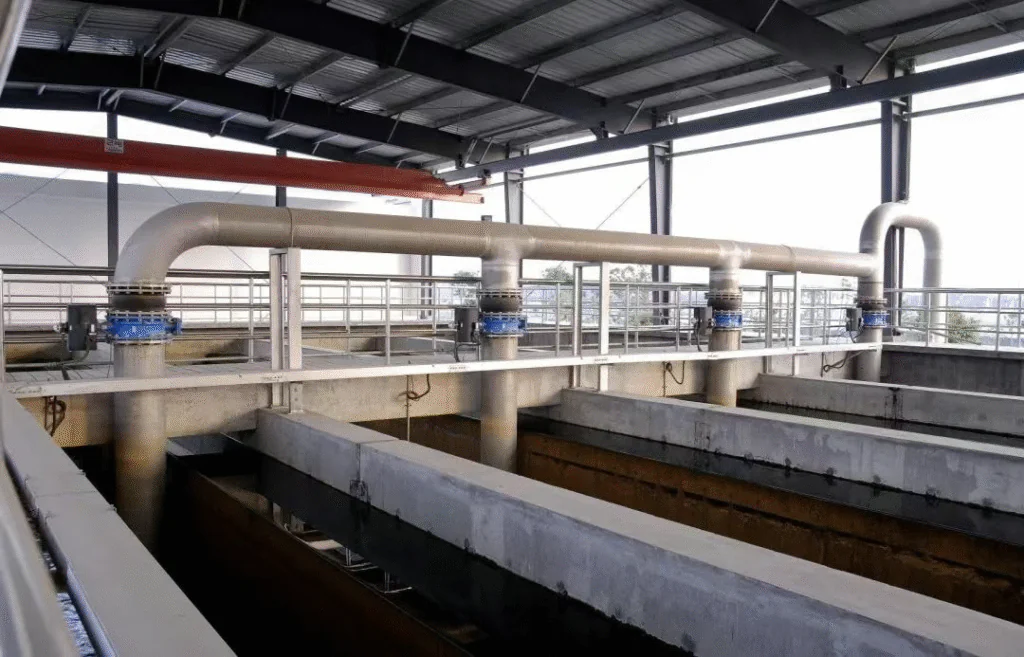In modern wastewater treatment, nitrogen removal technologies keep improving. One method is getting more attention — sulfur-based autotrophic denitrification. This method does not need organic carbon. It is now widely used in real projects.
This article answers two key questions:
- ❓ What’s the difference between autotrophic and heterotrophic denitrification?
- ❓ What are the advantages and limits of sulfur-based denitrification?
Autotrophic vs. Heterotrophic Denitrification: What’s the Difference?
🧪 Heterotrophic denitrification is the most common method today.
It is used in systems like AO and A2O, based on activated sludge.
In this method:
- Bacteria work in anoxic conditions (low oxygen).
- They use organic matter in the water as carbon source and electron donor.
- Nitrate acts as the electron acceptor and is turned into nitrogen gas.
⚠️ But this process uses a lot of organic carbon.
If the incoming water does not have enough carbon, you must add extra chemicals like sodium acetate or glucose.
🧪 Autotrophic denitrification is different. It uses special bacteria called autotrophs. They get their food from inorganic carbon (like CO₂ or carbonate). They don’t need or consume organic matter.
For electron donors, they use inorganic materials such as:
- Sulfide
- Elemental sulfur
- Ferrous iron
These still reduce nitrate into nitrogen gas. Many systems use sulfur-based media, where bacteria grow and carry out the reaction.

How Sulfur-Based Denitrification Works
In real projects, sulfur-based denitrification is done in filters or reactors. 🧱 Sulfur-rich media is added inside.
This media does two jobs:
- It gives a surface for bacteria to grow on.
- It acts as the electron donor for the reaction.
Over time, the media gets used up and may clog. So, it needs regular replacement and backwashing.
Even though this method doesn’t need added carbon,
⚙️ it still depends on key factors like:
- pH
- Dissolved oxygen (DO)
- Temperature
- Carbon to nitrogen ratio (C/N)
These controls are similar to those in heterotrophic systems.
Key Advantages of Sulfur-Based Denitrification
Compared to the traditional method, sulfur-based denitrification has many benefits:
✅ No need for carbon dosing Sulfur or ferrous iron in the media works as an electron donor. This cuts chemical costs.
✅ Can help remove phosphorus Some media includes limestone, which helps remove phosphorus during the reaction.
✅ Lower long-term cost Media is added once and only changed occasionally. This is cheaper than adding carbon all the time.
✅ Supports strong bacteria growth The media has a large surface area, which helps bacteria grow and boosts nitrogen removal.
Limitations and Challenges
Even with many advantages, this method also has some challenges:
⚠️ Consumes a lot of alkalinity During the reaction, alkalinity drops fast. If not corrected, pH will go down and slow the process.
⚠️ Risk of unwanted by-products Sulfur can turn into sulfate or even release toxic gases in some conditions.
⚠️ Clogging issues Sludge and bacteria buildup can block the media. Regular cleaning is needed.
⚠️ Media selection matters Different media gives different results. Bad choices can raise cost and lower performance.
⚠️ Higher setup cost To use this method, you may need to upgrade reactors or filters, which costs more at the start.

🧾 Final Thoughts
Sulfur-based autotrophic denitrification is a low-carbon, efficient nitrogen removal method. It works well for wastewater with high ammonia and low C/N ratio.
With the right media and good system control, it can: ✔️ Improve nitrogen removal ✔️ Reduce operating costs
But it still needs good design and regular maintenance to run smoothly and last long.
💬 Have thoughts or experience with this method? Feel free to share your insights in the comments!
